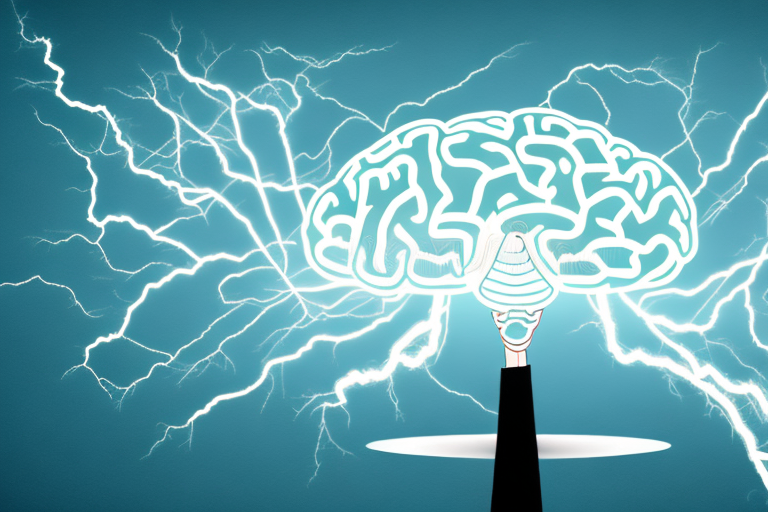
Attention Deficit Hyperactivity Disorder (ADHD) is a neurodevelopmental disorder that affects both children and adults. It is characterized by persistent patterns of inattention, impulsivity, and hyperactivity that interfere with daily life activities. While ADHD is a common condition, it can be challenging to diagnose and manage, as its symptoms can vary widely from person to person.
Understanding ADHD: Definition and Symptoms
Defining Attention Deficit Hyperactivity Disorder
ADHD is a complex neurodevelopmental disorder that affects millions of people worldwide. It is a condition that affects the way a person processes information, which can lead to difficulties in learning, social interactions, and everyday tasks. The condition is typically diagnosed in childhood, but it can persist into adulthood. ADHD is classified as a neurodevelopmental disorder, which means it affects the development of the brain and nervous system.
ADHD is a condition that can be challenging to diagnose, as there is no single test that can definitively diagnose the condition. Instead, doctors rely on a combination of medical history, behavioral observations, and symptom checklists to make a diagnosis.
Common Symptoms of ADHD
The symptoms of ADHD can vary depending on the type of presentation, but they generally fall into three categories: inattention, hyperactivity, and impulsivity. Symptoms of inattention include difficulty focusing, forgetfulness, and disorganization. Hyperactivity symptoms may include restlessness, fidgeting, and difficulty sitting still. Impulsivity symptoms may manifest as interrupting others, blurting out answers, or acting without thinking.
It is important to note that not everyone with ADHD will exhibit all of these symptoms, and the severity of symptoms can vary from person to person. Additionally, some people may only exhibit symptoms in one category, while others may exhibit symptoms in all three categories.
ADHD in Children vs. Adults
While ADHD can impact both children and adults, the symptoms may present differently in each age group, making it difficult to recognize the condition. Children with ADHD may struggle more with attention and hyperactive/impulsive behaviors in social situations and at school, while adults with ADHD may struggle more with task initiation and completion, time management, and organization in the workplace or other adult responsibilities.
It is important to note that ADHD can have a significant impact on a person’s life, regardless of their age. If left untreated, ADHD can lead to difficulties in school, work, and relationships. However, with proper diagnosis and treatment, many people with ADHD are able to manage their symptoms and lead fulfilling lives.
The Science Behind ADHD
Attention Deficit Hyperactivity Disorder (ADHD) is a neurodevelopmental disorder characterized by symptoms of inattention, hyperactivity, and impulsivity. While the exact cause of ADHD is not fully understood, researchers have identified several factors that contribute to the development of this condition.
Neurological Factors
Research has shown that ADHD is associated with structural and functional differences in specific parts of the brain, including the prefrontal cortex, basal ganglia, and cerebellum. These regions are responsible for executive functions, including attention, inhibition, and working memory. People with ADHD may have reduced activity in these areas of the brain, which can lead to difficulties with attention, impulse control, and other symptoms of the disorder.
Additionally, studies have shown that people with ADHD may have imbalances in certain neurotransmitters, including dopamine, norepinephrine, and serotonin. These neurotransmitters play a critical role in regulating mood, attention, and behavior, and imbalances can contribute to the development of ADHD symptoms.
Genetic Influences
ADHD also has a strong genetic component, as studies have indicated that first-degree relatives of individuals with ADHD are more likely to develop symptoms of the condition. Genes that are implicated in ADHD are associated with dopamine regulation, serotonin synthesis, and other neurotransmitter functions that are critical for impulse control and attention. While genetics do not fully explain the development of ADHD, they are an important factor in understanding the condition.
Environmental Factors
While genetics play a significant role in the development of ADHD, environmental factors also contribute to the condition. Exposure to toxins like lead or alcohol during pregnancy, premature birth, low birth weight, and traumatic experiences can all increase the risk of developing ADHD. Environmental factors can also exacerbate symptoms in individuals who are genetically predisposed to ADHD.
It is important to note that ADHD is a complex condition that is influenced by a variety of factors. While researchers have made significant strides in understanding the underlying causes of ADHD, there is still much to learn about this condition. Ongoing research is critical for developing effective treatments and interventions for individuals with ADHD.
Types of ADHD
Attention Deficit Hyperactivity Disorder (ADHD) is a neurodevelopmental disorder that affects both children and adults. ADHD can be classified into three different types, each with its own unique set of symptoms and challenges. The three types of ADHD are:
Predominantly Inattentive Presentation
This type of ADHD is characterized primarily by symptoms of inattention, rather than hyperactivity or impulsivity. Individuals with this presentation may have difficulty focusing on tasks, following instructions, and completing work on time. They may also struggle with organization and planning.
Children with predominantly inattentive presentation may have trouble paying attention in class, completing homework assignments, and following through on chores at home. Adults with this type of ADHD may have difficulty with time management, organization, and meeting deadlines at work.
Predominantly Hyperactive-Impulsive Presentation
This type of ADHD is characterized by symptoms of hyperactivity and impulsivity, rather than inattention. Individuals with this presentation may struggle with sitting still, remaining quiet, and waiting their turn. They may also act impulsively, without considering the consequences of their actions.
Children with predominantly hyperactive-impulsive presentation may have trouble sitting still in class, may interrupt others while they are speaking, and may be seen as “always on the go.” Adults with this type of ADHD may have trouble sitting through meetings, may interrupt others during conversations, and may have a hard time waiting in line or in traffic.
Combined Presentation
This is the most common type of ADHD, and it is characterized by a combination of inattention, hyperactivity, and impulsivity symptoms. Individuals with this presentation may have difficulty paying attention to details, following instructions, and controlling their behavior in social situations.
Children with combined presentation may exhibit symptoms of both inattention and hyperactivity-impulsivity. They may struggle with completing tasks, sitting still, and following rules. Adults with combined presentation may have difficulty with time management, organization, and may struggle with relationships due to impulsive behavior.
It is important to note that ADHD is a complex disorder and can look different in each individual. It is important to seek a professional diagnosis and treatment plan if you suspect you or a loved one may have ADHD.
Diagnosing ADHD
Attention Deficit Hyperactivity Disorder (ADHD) is a neurodevelopmental disorder that affects both children and adults. It is characterized by a persistent pattern of inattention, hyperactivity, and impulsivity that interferes with daily life activities. ADHD can affect an individual’s ability to focus, organize, and complete tasks, making it challenging to succeed in school, work, and social situations.
Diagnostic Criteria
The diagnostic criteria for ADHD involve a review of the individual’s symptoms, medical history, and other relevant information. The symptoms must have been present for at least six months and must occur in multiple settings, such as at school, home, or work. The criteria include:
- Persistent pattern of inattention
- Persistent pattern of hyperactivity
- Persistent pattern of impulsivity
- Interference with daily life activities
It is essential to note that ADHD symptoms can vary in severity and presentation, making diagnosis challenging. However, accurate diagnosis is crucial to ensure that individuals receive appropriate treatment and support.
Assessment Process
The assessment process for ADHD may involve multiple steps, including a clinical interview, behavioral and cognitive assessments, and rating scales completed by the individual and their family members or caregivers. The goal of the assessment process is to gather information about the individual’s symptoms, medical history, and other relevant factors to make an accurate diagnosis.
The assessment process may also involve ruling out other possible causes of the symptoms, such as anxiety, depression, or other medical conditions. This process is known as differential diagnosis and is critical in ensuring that individuals receive the correct diagnosis and treatment.
Differential Diagnosis
Other conditions can mimic the symptoms of ADHD, making it crucial to consider other possible diagnoses before making a final determination. Some of these conditions include:
- Learning disabilities
- Anxiety disorders
- Depression
- Bipolar disorder
- Autism spectrum disorder
It is essential to rule out these conditions before making a final diagnosis of ADHD. This process can involve additional assessments and evaluations to ensure that the correct diagnosis is made.
Overall, ADHD is a complex condition that can significantly impact daily life activities. While there is no cure for ADHD, effective treatment options are available, including medication, therapy, and lifestyle modifications. Early diagnosis and intervention are key to mitigating the effects of ADHD on an individual’s quality of life, making it essential to recognize and understand the condition’s symptoms and diagnostic process.




